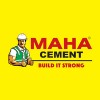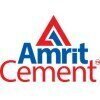Filter interviews by
Meghalaya Cements Technical Sales Executive Interview Questions and Answers
Meghalaya Cements Technical Sales Executive Interview Experiences
1 interview found
I applied via Referral and was interviewed in Oct 2022. There were 4 interview rounds.

(2 Questions)
- Q1. Where did I work earlier
- Q2. Why I left earlier organisation
(2 Questions)
- Q1. Different is codes for OPC and PPC cement
- Ans.
OPC and PPC cement have different IS codes.
OPC cement has IS code 269:1989 while PPC cement has IS code 1489:1991.
OPC cement is made by grinding clinker with gypsum while PPC cement is made by adding pozzolanic material like fly ash to clinker.
OPC cement has higher strength and is used for construction of high-rise buildings while PPC cement is used for mass concrete works like dams and bridges.
- Q2. Common issues seen in concrete structures
- Ans.
Common issues in concrete structures include cracking, spalling, and corrosion.
Cracking due to shrinkage, thermal expansion, or overloading
Spalling caused by freeze-thaw cycles, chemical exposure, or poor curing
Corrosion of reinforcing steel due to exposure to moisture and chloride ions
Joint failure due to inadequate design or construction
Alkali-silica reaction causing expansion and cracking
Carbonation leading to loss ...
(1 Question)
- Q1. How much package are you expecting
Interview Preparation Tips
Top trending discussions






Interview questions from similar companies

I applied via Naukri.com and was interviewed in Jul 2021. There was 1 interview round.
Interview Questionnaire
1 Question
- Q1. Questions were asked from me relative to the instrument
Interview Preparation Tips

I applied via Company Website and was interviewed before Sep 2021. There were 2 interview rounds.

(3 Questions)
- Q1. What are the close loops in CFBC boiler operation?
- Ans.
Close loops in CFBC boiler operation are used for controlling various parameters.
Close loop for controlling bed temperature
Close loop for controlling air flow rate
Close loop for controlling fuel feed rate
Close loop for controlling steam pressure
Close loop for controlling flue gas temperature
- Q2. Tell about turbine protection system.
- Ans.
Turbine protection system is a safety system that protects the turbine from damage during abnormal conditions.
It monitors various parameters like temperature, pressure, vibration, and speed.
It triggers alarms and trips the turbine if any parameter exceeds the safe limit.
It also includes emergency shutdown systems to prevent catastrophic failures.
Examples of protection systems include overspeed protection, low oil press...
- Q3. What are the steps to edit rung in AB PLC software RS Logics
- Ans.
To edit a rung in AB PLC software RS Logix, follow these steps:
Open the RS Logix software and select the project
Navigate to the ladder logic editor and locate the rung to be edited
Double-click on the rung to open the rung editor
Make the necessary changes to the rung
Save the changes and download the updated program to the PLC
Interview Preparation Tips

Graduate Engineer Trainee (Get) Interview Questions & Answers
JSW Cementposted on 6 Oct 2017
I appeared for an interview before Oct 2016.
Interview Questionnaire
4 Questions
- Q1. Tell us about yourself
- Ans.
I am a recent graduate with a degree in engineering, eager to learn and grow in the field.
Recent graduate with a degree in engineering
Passionate about learning and growing in the field
Eager to apply my knowledge and skills in a professional setting
- Q2. Explain the project you did in your college?
- Ans.
Designed and implemented a solar-powered irrigation system for agricultural fields.
Researched solar panel efficiency and irrigation system design
Collaborated with local farmers to understand their needs
Implemented a prototype system and tested it in a field setting
Analyzed data on water usage and crop yield to evaluate system effectiveness
- Q3. And some more questions related to Chemical Engineering
- Q4. Asked about my willingness of working in that particular location
Interview Preparation Tips
Experience: We were asked to give the test within a time span of 60 minutes.
Tips: Just be confident and don't spend too much time on a single question. Try to answer as many questions as possible in case of no negative marking.
Duration: 1 hour
Total Questions: 60
Round: Technical + HR Interview
Experience: I was asked about my major project and my introduction and a few simple questions about my subject. Also about why wasn't I placed till that interview.
Tips: Just be frank and answer only what you know, don't try to fake anything or mislead them. Be confident in your answers
College Name: NIT Bhopal

Graduate Engineer Trainee (Get) Interview Questions & Answers
N.C.L. Industriesposted on 23 Nov 2023

(4 Questions)
- Q1. Cement manufacturing process
- Q2. About heat transfer
- Q3. Mechanical unit operations
- Q4. Distillation column

Graduate Engineer Trainee (Get) Interview Questions & Answers
N.C.L. Industriesposted on 25 Feb 2022
I applied via Campus Placement and was interviewed in Aug 2021. There were 3 interview rounds.
(1 Question)
- Q1. Types of soils, Types of cement, concrete, Tests conducted on cement, concrete
- Ans.
The question is about types of soils, cement, and concrete, and tests conducted on them.
Types of soils include clay, sand, silt, and loam.
Types of cement include Portland cement, white cement, and rapid-hardening cement.
Types of concrete include plain concrete, reinforced concrete, and pre-stressed concrete.
Tests conducted on cement include compressive strength test, fineness test, and soundness test.
Tests conducted on...
Interview Preparation Tips

Graduate Engineer Trainee (Get) Interview Questions & Answers
My Home Industriesposted on 21 Feb 2024
I applied via Naukri.com and was interviewed in Jan 2024. There was 1 interview round.
(1 Question)
- Q1. About your project Qtns on fav subject

I applied via Campus Placement and was interviewed before Oct 2021. There were 3 interview rounds.
Technical and english question
Topic was given to all student and had discussion
(4 Questions)
- Q1. Introduction of yourself??
- Q2. Which project you completed
- Ans. In college projects, have depth knowledge
- Q3. Where did you completed training??
- Q4. Give the answer and share your experience
Interview Preparation Tips

Graduate Engineer Trainee (Get) Interview Questions & Answers
Nuvoco Vistasposted on 4 Apr 2024
I applied via Campus Placement and was interviewed in Mar 2024. There were 3 interview rounds.
(2 Questions)
- Q1. Definition of cement
- Ans.
Cement is a binding material used in construction to hold together materials like sand and gravel.
Cement is a fine powder made from limestone, clay, and other minerals.
When mixed with water, cement forms a paste that hardens and binds materials together.
Common types of cement include Portland cement, which is used in most construction projects.
Cement is a key ingredient in concrete, mortar, and grout.
It plays a crucial...
- Q2. Ingredient of cement
- Ans.
The main ingredients of cement are limestone, clay, and gypsum.
Limestone is the main component, providing calcium.
Clay is used to provide silica, alumina, and iron oxide.
Gypsum is added to control the setting time of the cement.
Other additives like fly ash or slag may also be used for specific properties.
GD topic is human vs ai
(2 Questions)
- Q1. Grade of cement
- Ans.
Grade of cement refers to the strength of the cement based on the compressive strength it can achieve after 28 days of curing.
Cement grades are classified as 33, 43, and 53 based on their compressive strength in MPa.
Grade 33 cement has a compressive strength of 33 MPa, grade 43 has 43 MPa, and grade 53 has 53 MPa.
Higher grade cement is used for construction projects that require high strength like bridges and high-rise
- Q2. Which ingredient provide strength and hardnes in cement
- Ans.
The ingredient that provides strength and hardness in cement is calcium silicate.
Calcium silicate reacts with water to form calcium silicate hydrate, which contributes to the strength and hardness of cement
Other ingredients like alumina and iron oxide also contribute to the strength of cement
The ratio of these ingredients in cement mix determines the final strength and hardness of the cement
Interview Preparation Tips

Graduate Engineer Trainee (Get) Interview Questions & Answers
Sanghi Industriesposted on 31 Jan 2022
I applied via Campus Placement and was interviewed in Jul 2021. There were 3 interview rounds.
(1 Question)
- Q1. Electrical machines , Power systems (maximum questions protection) and Power electronics
Series questions, Alphabet logical and Time speed and distance relation questions
(1 Question)
- Q1. Basic questions and answers family background and checked nature and behaviour
Interview Preparation Tips
Meghalaya Cements Interview FAQs
Tell us how to improve this page.
Meghalaya Cements Interviews By Designations
- Meghalaya Cements Graduate Engineer Trainee (Get) Interview Questions
- Meghalaya Cements Instrument Engineer Interview Questions
- Meghalaya Cements Assistant Engineer Interview Questions
- Meghalaya Cements HR Executive Interview Questions
- Meghalaya Cements Electrical Engineer Interview Questions
- Meghalaya Cements Graduate Trainee Interview Questions
- Meghalaya Cements Technical Trainee Interview Questions
- Meghalaya Cements Store Officer Interview Questions
- Show more
Interview Questions for Popular Designations
- Technical Lead Interview Questions
- Technical Support Engineer Interview Questions
- Technical Specialist Interview Questions
- Technical Engineer Interview Questions
- Member Technical Staff Interview Questions
- Technical Analyst Interview Questions
- Technical Consultant Interview Questions
- Technical Architect Interview Questions
- Show more
Interview Questions from Similar Companies
|
Assistant Engineer
72
salaries
| ₹2.5 L/yr - ₹4.2 L/yr |
|
Engineer
46
salaries
| ₹3.5 L/yr - ₹6 L/yr |
|
Graduate Engineer Trainee (Get)
38
salaries
| ₹1.8 L/yr - ₹3.1 L/yr |
|
Sales Executive
26
salaries
| ₹1.4 L/yr - ₹5.5 L/yr |
|
Assistant Electrical Engineer
26
salaries
| ₹2.5 L/yr - ₹4.2 L/yr |

Nuvoco Vistas

Infra.Market

Jaquar

JSW Cement
- Home >
- Interviews >
- Meghalaya Cements Interview Questions >
- Meghalaya Cements Technical Sales Executive Interview Questions











